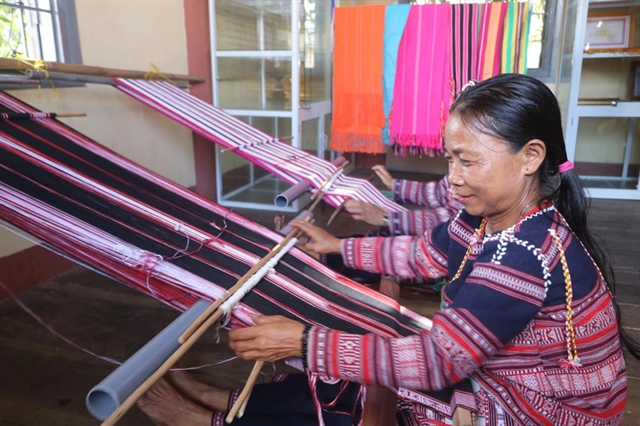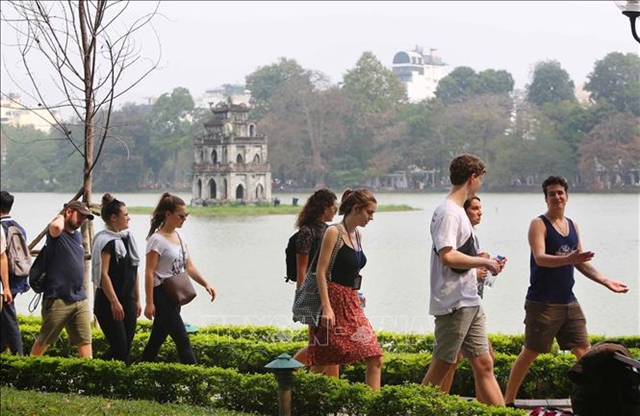 Economy
Economy

Deputy Minister of Planning and Investment Trần Quốc Phương spoke to the Vietnam News Agency about the need to develop a master development planning for the Mekong Delta region

|
| Children fly kites on rice fields in Hòn Đất District, the Mekong Delta province of Kiên Giang. VNA/VNS Photo Trọng Đạt |
Deputy Minister of Planning and Investment Trần Quốc Phương spoke to the Vietnam News Agency about the need to develop a master development planning for the Mekong Delta region
In July, Prime Minister Nguyễn Xuân Phúc approved a project on developing the planning for the Mekong Delta region in 2021-2030 with a vision toward 2050. The Ministry of Planning and Investment was assigned to lead and co-ordinate other ministries and agencies to write the planning. Why is this planning necessary?
Mekong Delta region planning is important for both the development of the region and the whole of Việt Nam. The Mekong Delta region is a coastal area in the lower part of the Mekong River, consisting of 13 cities and provinces. The region’s area accounts for 12 per cent of the country’s area and is home to 20 per cent of Việt Nam’s population.
With its potential, advantages and attention paid by the Party, State and Government to the region’s development, agriculture, aquaculture, forestry, industrial production and tourism hubs have been formed and expanded in the region.
Now, the Mekong Delta is the biggest agricultural production area in Việt Nam, helping improve the livelihood of local people and ensure national food security.
Besides these advantages, the region has never faced as many challenges as now including challenges from climate change or pressures from socio-economic development. The region is now more vulnerable to flooding, droughts, storms, land subsidence and saltwater intrusion. Climate change and socio-economic development issues create increasing threats to the region’s infrastructure, people’s living conditions and livelihoods.
Notably, the construction of dams on the upper part of the Mekong River in other countries changes the river’s flow and reduces the amount of alluvial and aquaculture resources but increases saltwater intrusion, flooding and drought in the region. The overexploitation of sand on rivers breaks ecological balance, causing environmental pollution, erosion along coasts or rivers and flooding in urban and residential areas. These factors have left negative impacts on residents’ livelihood as well as the development of the region.
What major issues must be included in the planning?
The Prime Minister had requirements for the planning. First of all, the planning has to identify the development outlook, zoning and resources for socio-economic activities, national defence and environmental protection.
The planning must be intersectoral, inter-provincial and inter-regional so the advantages and resources of every province in the region are used and promoted effectively.
The planning is also expected to harmonise the structure of agriculture, industry and service in the region’s economy as well as address issues of urban areas, population, infrastructure and human resources. The region is hoped to achieve sustainable development and adapt to climate change’s impacts.
It is also very important to identify targets, solutions, resources and stakeholders’ responsibilities to implement the planning effectively.
In the four months since the PM agreed to develop planning for the region, what have the planning developers done?
The Ministry of Planning and Investment has organised 17 conferences and 12 meetings with ministries, agencies and localities in the region and local and international experts to consult and outline the planning.
We reached agreements on the points that agriculture is still a major strength for the Mekong Delta region’s development, the region’s infrastructure should be developed systematically to better adapt to climate change and natural disasters, and the region’s soil and water resources should be managed and exploited better.
We are still discussing the roles and positions of the Mekong Delta in national development and its connections with ASEAN countries, southeastern provinces and HCM City. Other controversial issues include sub-region zoning, the reduction of rice-growing area, new hubs to develop and orientations for urban development.
What are the biggest challenges for the development of the Mekong Delta?
The region faces the biggest challenges relating to water, population and infrastructure. The constructions of hydropower plans in upper parts of the Mekong Delta River and the impacts of climate change could make freshwater more scarce. So, we have put water issues at the centre of this planning.
It’s water that brings alluvial to the region, enriching the soil there and helping local farms prosper. However, climate change, rising seawater levels and saltwater intrusion destroy conventional farming models that are based on freshwater.
The region features a dense network of channels and canals, so its roads are insufficient. This poses another challenge for regional development.
The region reportedly faces a labour shortage although it has a golden population structure. People at working age in the Mekong Delta now tend to leave their hometown to seek jobs in other provinces, for example, HCM City is considered a promising land for them.
Besides its disadvantages, what are the opportunities for the region to develop?
When compiling the development planning for the Mekong Delta, we see the region with its both advantages and disadvantages and try our best to turn its disadvantages into opportunities for the region to develop.
We also keep the target on sustainable development throughout the planning. At the same time, we try to identify key areas to invest in.
As water resource management is at the heart of the planning, we based on kinds of water to divide the region into different zones – freshwater, brackish water and saltwater. The brackish water zone is the most difficult for planning because of its flexibility and continuous changes.
After zoning, we identify specific crops, animals, agriculture production plans, tourism or processing industry for each zone. We follow a motto “Live together with freshwater/brackish water/saltwater”, expecting that the proper use of water resource will go along with the increase of economic values of local products, regional competitiveness and promote regional potential.
Once the planning is approved, the Ministry of Planning and Investment as a contact body of the Co-ordination Council for Mekong Delta region during 2020-2025 will submit to the Government recommendations on allocating resources for the region’s development. We expect to submit the planning to the Prime Minister next month. VNS




